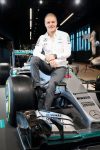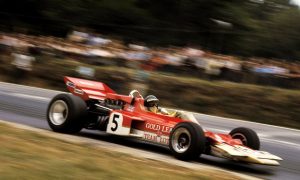
©XPB Images & Wri2
SENNA, SCHUMACHER, ALONSO…
Despite spending most of his time at the factory, Symonds has always made sure to establish and keep a close relationship with the drivers he has collaborated with. Whether he was working on R&D or as exploitation engineer (having done both is a rare feat in the F1 paddock), the Briton was overseeing the whole orchestra and its star soloists, including rare talents such as Senna, Schumacher, and more recently Fernando Alonso. Over the years, Symonds has noticed a change in the interaction between the drivers and their engineers.
“The current guys have to work in a quite different way. If you go back to my early days, working with Ayrton for example, in those days, people find it hard to believe, but we didn’t had any data acquisition at all, certainly no telemetry. So we used to have to ask the driver what the water temperature was, what the oil temperature was, what revs you got on different corners: he had to read it and after to remember it.
“That was not an easy task. When I asked Derek [Warwick] for his revs in one corner, he said: ‘I’m too busy, I can’t tell you.’ Ayrton had mental capacity left for remembering the exact revs on every corner.”
PASSING THE TORCH
“If you ask Valtteri [Bottas] now what is the water temperature of the car, he would not know, he has never seen it, and he doesn’t need to. Equally, his description of what the car is doing is different as well because with Ayrton, in those days, you needed very precise descriptions. Our debriefings with the drivers took a long time because it was all we had to work with.
“Whereas now, with the data, we know more about what the car is doing than the driver does. What we want to learn from him is what’s stopping him going quicker, what is the interaction between the man and the machine that’s causing us a problem. There are still certain aspects of the interface between man and machine that we can’t simulate.
“In this case I rely on the driver to tell me honestly and in simple terms just what he is feeling and what is limiting him from going faster. There are a lot of attributes that are exactly the same, and those are the attributes of all sports, but technically the requirements are quite different.”
Besides helping bring many a young talent to the fore, Symonds has inspired a generation of engineers, who also dreamt of designing cars when they were in school. The highly-respected figure says he draws as much pleasure from this passing of the torch as from the seven world titles he has contributed to, as highlighted by his avid writing during his rare down time.
“My wife will tell you very strongly that I have no time whatsoever for anything else! [Laughs] When I do need to switch off, one of the things I really like doing is writing. I enjoy doing your job! I currently write columns for magazines that I find both challenging and relaxing at the same time… And I have grandchildren; I love to play with them.”
Perhaps the next step will to bring them to Snetterton circuit, where a youthful Patrick Bruce Reith Symonds grew a passion for fast cars in 1967.

©XPB Images






